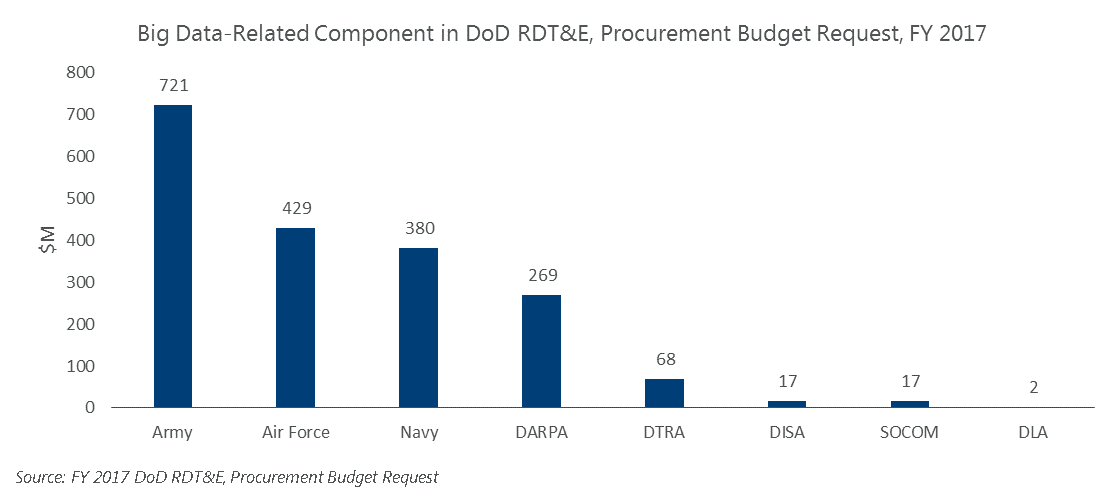Big Data Implications of the Rebuilding the U.S. Armed Forces Presidential Memo
Published: February 08, 2017
USAFARMYBig DataDEFENSEDISAForecasts and SpendingInformation TechnologyNAVYPolicy and LegislationPresident Trump
New implementation guidance issued by Defense Secretary Mattis promises growth in defense funding for big data technology.
On January 31, 2017, Defense Secretary Mattis issued implementation guidance with respect to the memorandum released a few days prior by the president titled, “Rebuilding the U.S. Armed Forces.” The guidance focuses on the budget portion of the memorandum and targets three key areas: improving warfighting readiness, achieving program balance by addressing pressing shortfalls, and building a larger, more capable, and more lethal force. A roll-out of these areas will be done in three phases, with the first phase as a budget supplement for FY 2017 that will likely increase requested funding for the Department of Defense compared to what the Obama administration submitted for FY 2017 last spring. The second phase is anticipated for release to OMB by May 1, 2017 in the FY 2018 DoD budget request and the third, and more long-term phase, will be a national defense strategy for FY 2019 – 2023 to build capacity and improve the lethality of the U.S. military.
Secretary Mattis’ guidance mentions investing in “critical enablers” and programs that promise advanced capability demonstrations. Big data tools, as enablers of situational awareness, fall in this category, particularly as far as Research and Development is concerned.
Historically, DoD’s spending on big data has been fast-paced, increasing by 69% between FY 2013 and 2015. However, the funding that DoD requested for programs with a big data-related component dipped slightly in FY 2017, as shown below in figures from the Research, Development, Test and Evaluation (RDT&E) and Procurement sections of the request.

Both President Trump and Secretary Mattis have expressed an interest in directing greater funding to R&D within the DoD. Where will this potential increase in funding go? The chart below shows the organizations within DoD that requested the highest level of funding for big data-related investments in FY 2017. Deltek anticipates that totals for each organization will go up, but especially for the three large Military Departments.

Looking ahead, Deltek expects the DoD will turn to big data technology to modernize its warfighting capabilities and increase the lethality of weapon systems. For example, the Air Force and Navy plan to increase their use of unmanned systems and vehicles, which calls for an increase in data analytics investment.
Furthermore, with the administration’s focus on defending against cyber-attacks, the use of enterprise-wide big data analytics across all defense systems will be a growing priority. DISA’s reliance on big data tools to monitor and defend the DoD Information Network (DoDIN) will keep funding heading to this space.
Keeping these priorities in mind, Deltek has forecast that the DoD will spend the following totals on big data technology through FY 2021.

Only time will tell how big data technology use by DoD will pan out under the new administration. It is safe to say, however, that funding in this technology area will continue growing for years to come.
Related DOD Memo Articles:
Budget Implications of the Rebuilding the U.S. Armed Forces Presidential Memo
Presidential Directive to Rebuild the Military Could Drive Growth in Key Areas of Defense Readiness
Unmanned/ISR Implications of the Rebuilding the U.S. Armed Forces Presidential Memo
Workforce Implications of the Rebuilding the U.S. Armed Forces Presidential Memo
Cybersecurity Implications of the Rebuilding the U.S. Armed Forces Presidential Memo